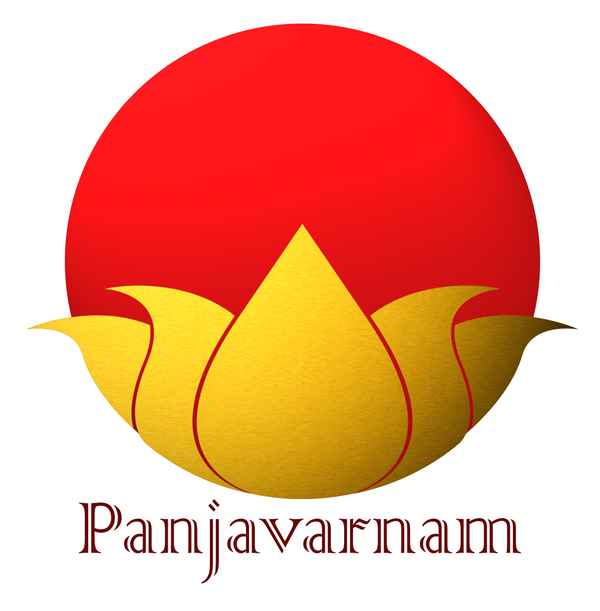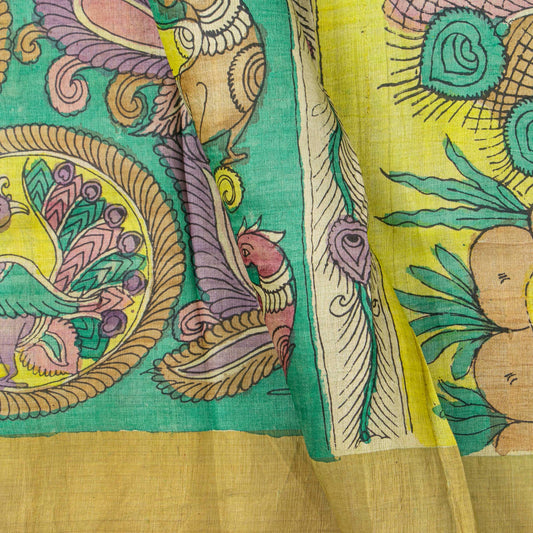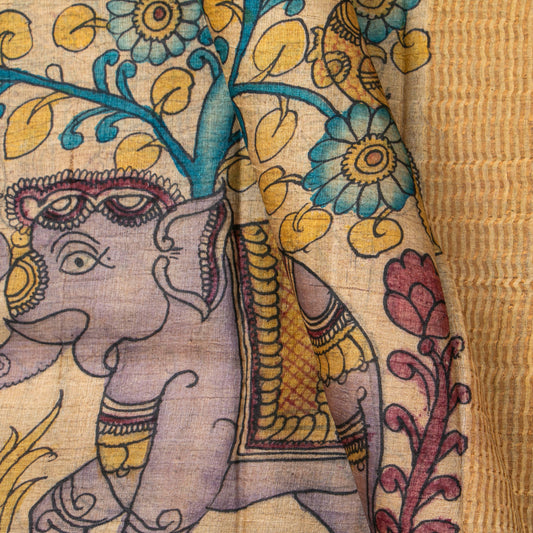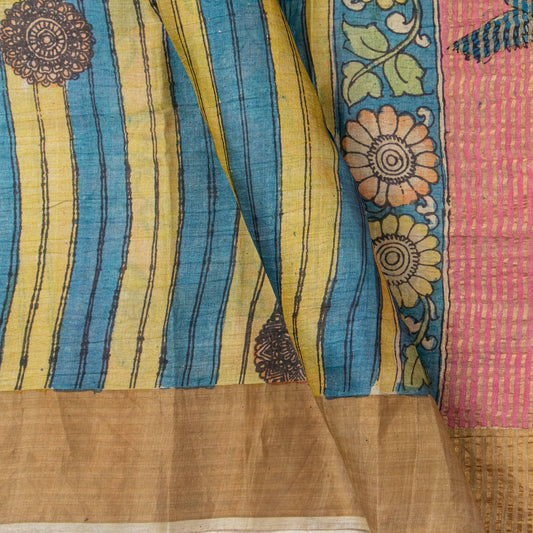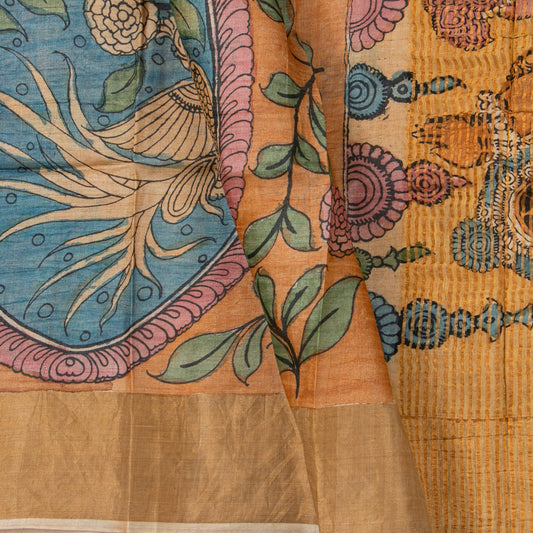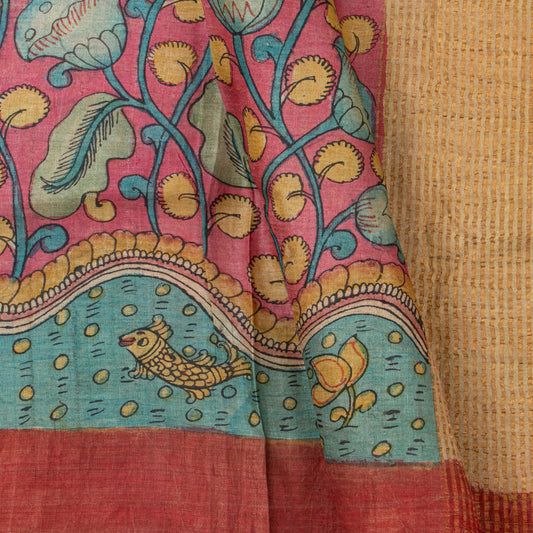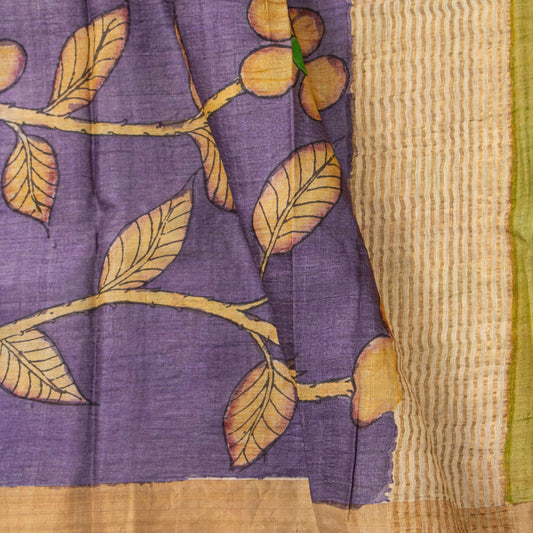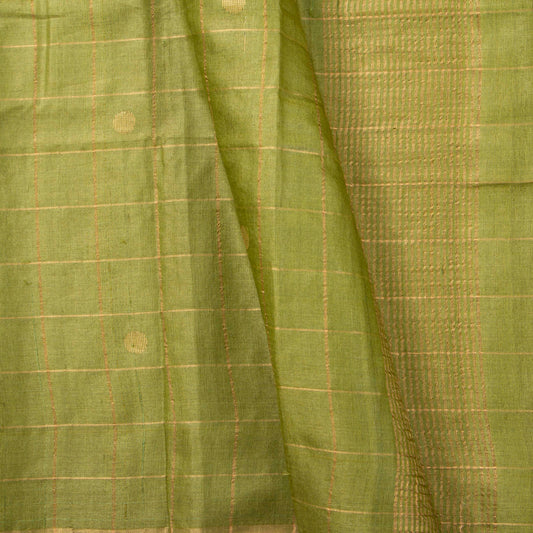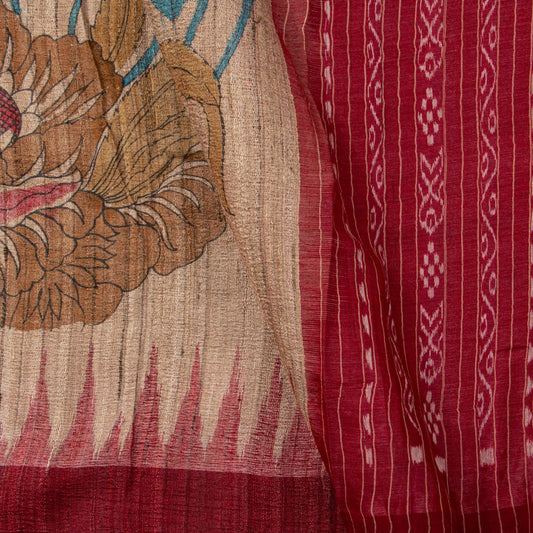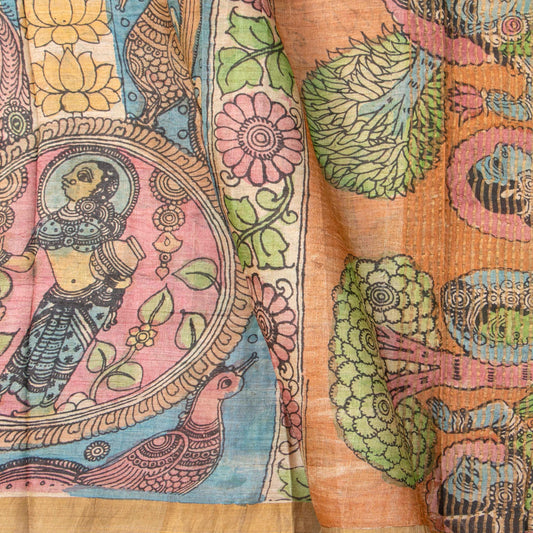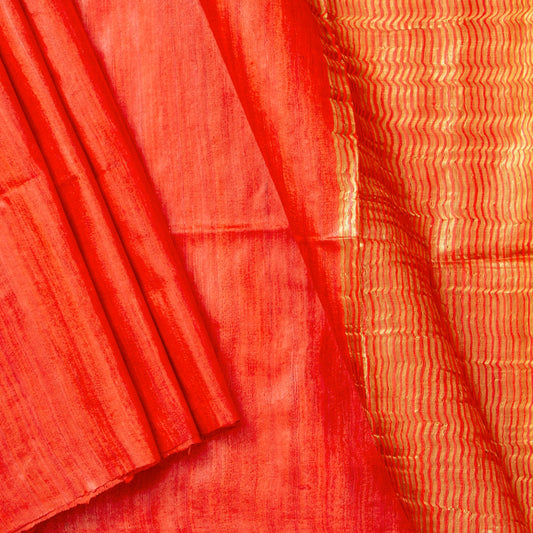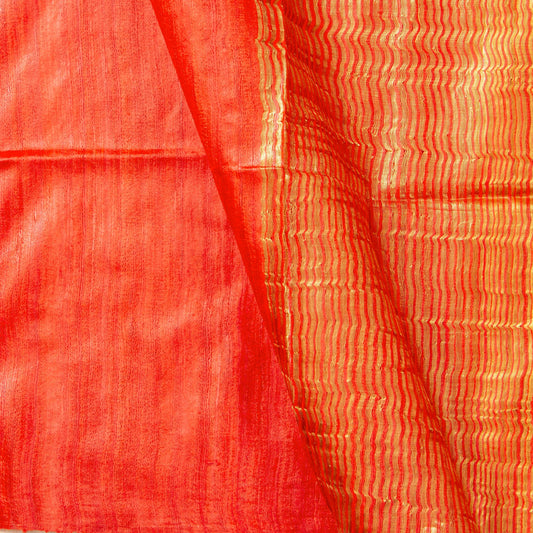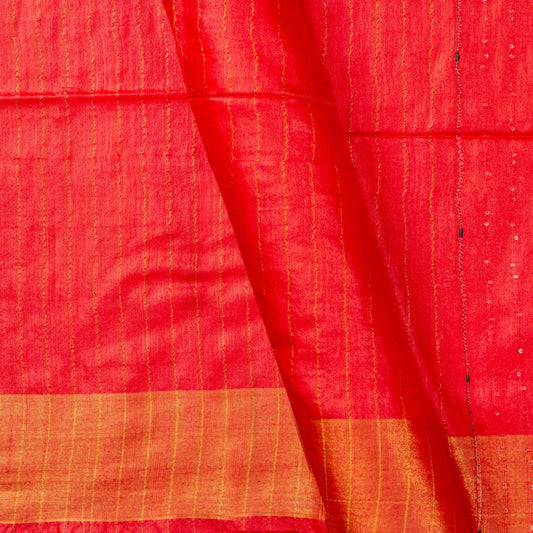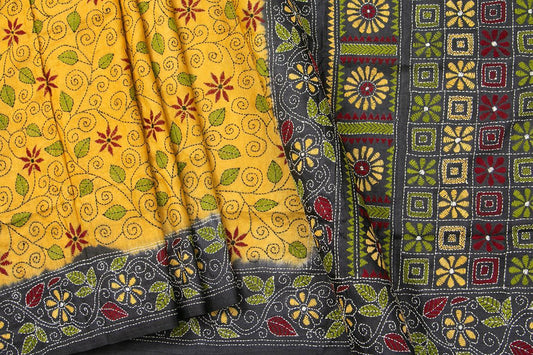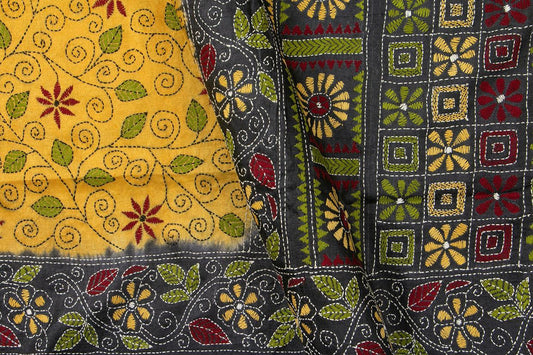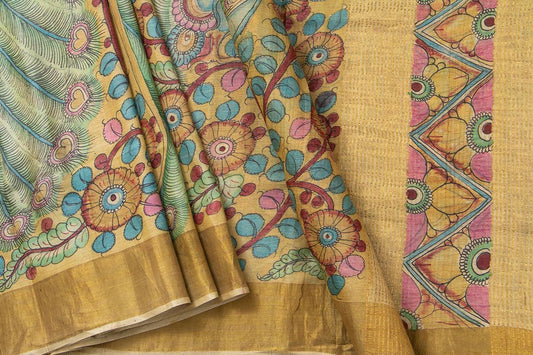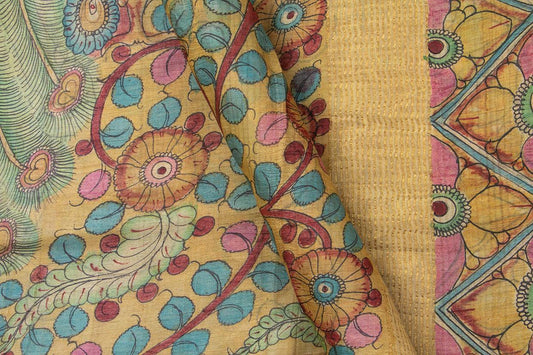-
Green Handpainted Kalamkari Tussare Silk Saree With Zari Border PTK VSR 135
Regular priceRs. 29,900.00Regular priceUnit price perRs. 34,900.00Sale price Rs. 29,900.00 -14% offSale -
Blue Handpainted Kalamkari Tussar Silk Saree With Zari Border PTK VSR 134
Regular priceRs. 29,900.00Regular priceUnit price perRs. 34,900.00Sale price Rs. 29,900.00 -14% offSale -
Beige Handpainted Kalamkari Tussar Silk Saree With Zari Border PTK VSR 133
Regular priceRs. 29,900.00Regular priceUnit price perRs. 34,900.00Sale price Rs. 29,900.00 -14% offSale -
Blue And Green Handpainted Kalamkari Tussare Silk Saree With Zari Border...
Regular priceRs. 29,900.00Regular priceUnit price perRs. 34,900.00Sale price Rs. 29,900.00 -14% offSale -
Orange Handpainted Kalamkari Tussare Silk Saree With Zari Border PTK VSR...
Regular priceRs. 29,900.00Regular priceUnit price perRs. 34,900.00Sale price Rs. 29,900.00 -14% offSale -
Green Handpainted Kalamkari Tussar Silk Saree With Zari Border PTK VSR 130
Regular priceRs. 29,900.00Regular priceUnit price perRs. 34,900.00Sale price Rs. 29,900.00 -14% offSale -
Mauve Handpainted Kalamkari Tussar Silk Saree With Zari Border PTK VSR 128
Regular priceRs. 29,900.00Regular priceUnit price perRs. 34,900.00Sale price Rs. 29,900.00 -14% offSale -
Green Banarasi Tussar Silk Saree PB 307
Regular priceRs. 14,900.00Regular priceUnit price perRs. 16,900.00Sale price Rs. 14,900.00 -12% offSale -
Pink Handpainted Kalamkari Gicha Tussar Silk Saree With Ikkat Pallu For ...
Regular priceRs. 39,900.00Regular priceUnit price perRs. 49,900.00Sale price Rs. 39,900.00 -20% offSale -
Blue Handpainted Kalamkari Tussare Silk Saree With Zari Border PTK VSR 129
Regular priceRs. 29,900.00Regular priceUnit price perRs. 34,900.00Sale price Rs. 29,900.00 -14% offSale -
Orange Tussar Silk Saree Handwoven PT 2078
Regular priceRs. 6,900.00Regular priceUnit price per -
Red Tussar Silk Saree Handwoven PT 2071
Regular priceRs. 4,900.00Regular priceUnit price per -
Munga Tussar Kantha Work Silk Sari PT MJ 33
Regular priceRs. 29,900.00Regular priceUnit price per -
Maroon And Black Kalamkari Tussar Silk Saree Handpainted Floral Patterns...
Regular priceRs. 29,900.00Regular priceUnit price perRs. 34,900.00Sale price Rs. 29,900.00 -14% offSale -
Beige Kalamkari Tussar Silk Saree Handpainted Floral And Peacock Pattern...
Regular priceRs. 29,900.00Regular priceUnit price perRs. 34,900.00Sale price Rs. 29,900.00 -14% offSale
All You Need To Know About Tussar Silk Sarees
Origin Of Tussar Silk Sarees
Tussar silk, also called wild silk, is obtained from the Tussar silk moth Antheraea millita, that feeds on leaves other than mulberry, thereby producing the wild silk fabric at a comparatively cheaper cost. Tussar, or Kosa silk, is one of the most convenient fabrics to drape. Tussar silk feels rich and regal, yet it is one of the lightest fabrics.
It is the preferred silk for special occasions due to its elegance and affordability. Its ability to refract two different hues at different angles is one of its greatest features. Because of this distinctive quality, Tussar silk wearers stand out in a crowd with ease.
India is the only country that produces Indian Tussar, sometimes referred to as tropical Tussar. It is also the world's second-largest producer of Tussar silk material.
Mysteries of the Beginning: Revealing the Tale of Tussar Silk
Silk has an exact origin shrouded under the shadows of many tales. One of the legends says that Princess Si Ling Shi (2600 BC) accidentally discovered the silk filament while having tea in the garden, which led to the fiber's discovery and, subsequently, its use for weaving. As for Tussar silk, it shares its history with raw silk and is rooted in medieval times. It was originally called Kosa silk in Sanskrit.
Historians state that the British East India Company was introduced to the Tussar silk insect in 1657, which led to the exhibition of these textiles at the Paris Exhibition of 1878. This even spurred its subsequent trade across England, France, and other countries worldwide. This is how Tussar silk gained prominence in European fashion trends and production in the mid-17th century, and it has been used to create various European textiles, such as printed silk curtains, furniture coverings, wall damasks, and clothing, ever since!
Faces Behind the Fabric
India is the main producer of Tussar silk. Producing Tussar is a rural art. Traditionally, the women of the tribal and rural areas were trained in weaving silk out of cocoons and fabrics out of the threads that were obtained. Like most of the other textile arts, Tussar too became a fabric of mechanization.
Styling Tips For Tussar Silk Sarees
More texture exists in Tussar silk than in any other type of silk. Being far more porous and transparent than the other types, the cloth is also colder. Tussar is wearable in warmer regions of the world since it is cooler than the other forms of silk.
It is the preferred silk for special occasions due to its elegance and affordability. Its ability to refract two different shades at different angles is one of its greatest features. Because of this distinctive quality, Tussar silk wearers stand out in a crowd with ease.
Matching Accessories That Enhance the Elegance of Tussar Silk Sarees!!!
Jewels: The richness of the Tussar silk saree can be enhanced with gold and antique jewels. This can include bangles with intricate patterns, earrings, and necklaces. Even pearl jewelry uplifts the outfit's look.
Footwear: Ethnic footwear is most suitable for the Tussar Silk saree. We can choose either traditional sandals or decorated sandals.
Bags: Embroidered clutch bags with contrast colors will enhance the look of the Tussar Silk Saree.
Hair Accessory: Using stunning hairpins or clips, especially for formal events, will boost the entire look.
Frequently Asked Questions
How to Take Care of Tussar Silk Sarees ?
- Handle dark colors with care and avoid using chemical bleach.
- For safety, Tussar cloth should ideally be dry-cleaned.
- Use muslin bags to store silk sarees.
- Since silk prefers to breathe, avoid packaging dry-cleaned Tussar in plastic.
- For delicate materials, hand wash in cold water with a small amount of liquid soap.
- If possible, spot clean stains with a light shampoo; if not, get dry cleaning.
- To prevent sun damage, occasionally air silk sarees in the shade.
- To prevent overexposure to heat, use a light muslin towel when ironing. Steer clear of brushes that damage sensitive
How to Judge Authenticity ?
- Feel: The feel of genuine Tussar silk is rough and gritty. Feel the distinct graininess of the cloth by running your fingers over it. The natural fibers and woodland setting used to make Tussar silk give it this feels.
- Weight: The toughness and inconsistent weave pattern of the fabric are attributed to the shorter fibers of Tussar silk. Over time, Tussar silk sarees lose their suppleness in contrast to synthetic silks, which are often stiff.
- Shine: Genuine Tussar silk reflects light with a warm, brilliant glow due to its natural luster. Synthetic silk, on the other hand, frequently has a consistent, fake silvery shine.
- Drape: Genuine Tussar silk sarees drape beautifully and get more flexible with time. On the other hand, imitation or synthetic Tussar silk usually doesn't soften.
- Borders: Genuine Tussar silk sarees feature a little uneven or irregular border as they are handcrafted.
What distinguishes Tussar silk from other types of silk?
Tussar silk differs from other silk as it is less lustrous and coarser. It is prized for its organic, earthy look and has a rough surface. Its surface is slightly matte with a distinctive gold luster.
How should Tussar silk clothing be maintained?
Tussar silk can be gently hand-washed with a mild detergent or dry cleaned. Keep it out of direct sunlight for long periods of time. Keep it in a dry, cold environment.
Is Tussar silk appropriate for every season?
Tussar silk is cozy and breathable, making it appropriate for summer and winter wear. Tussar silk in lighter weights is great for summer, and thicker weaves or layered looks are great in the winter.
Are Tussar silk sarees suitable for everyday wear?
Tussar silk sarees are typically preferred for special events and occasions; they can also be suitable for regular wear.
How do I buy Tussar silk sarees online from Panjavarnam?
Browse Panjavarnam's website, choose and review the product details of your favorite Tussar silk saree, and click "Buy It Now" to purchase online. You can contact customer care and request a video of the saree or schedule a video call appointment to view sarees. You can also visit the store in Mylapore, Chennai and physically see the saree before purchasing.
What makeup goes well with a Tussar saree?
For a balanced look, choose subtle makeup with nude or light pink lipstick, a touch of mascara, and a hint of kohl eyeliner.
What makes a Tussar saree from Panjavarnam special?
It's a user-friendly platform for finding your dream Tussar saree within your budget. We prioritize a seamless online shopping experience.
